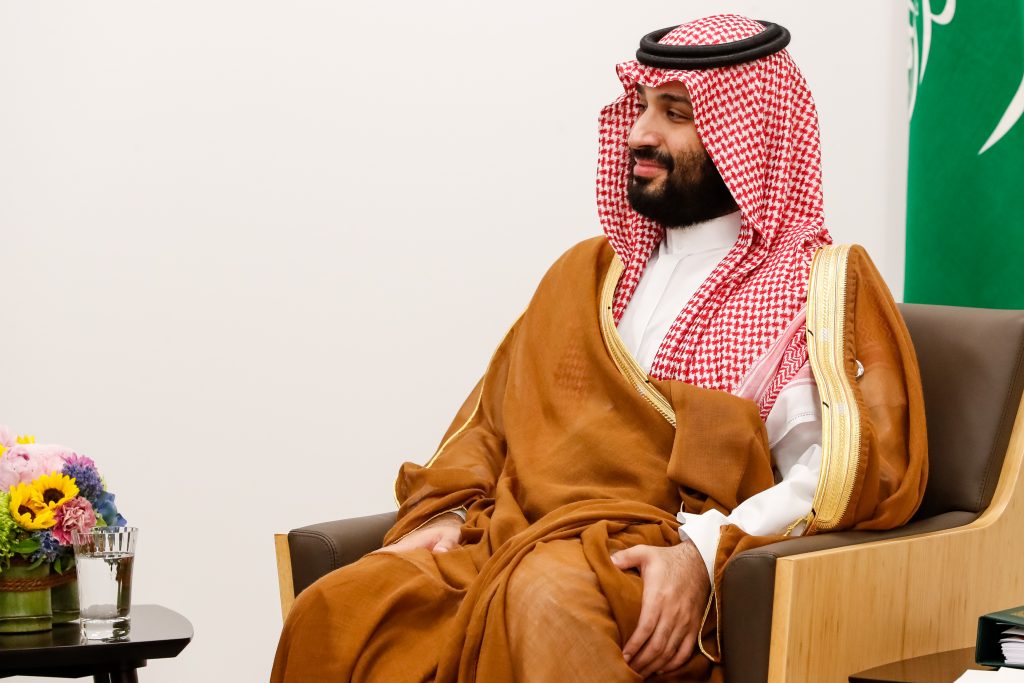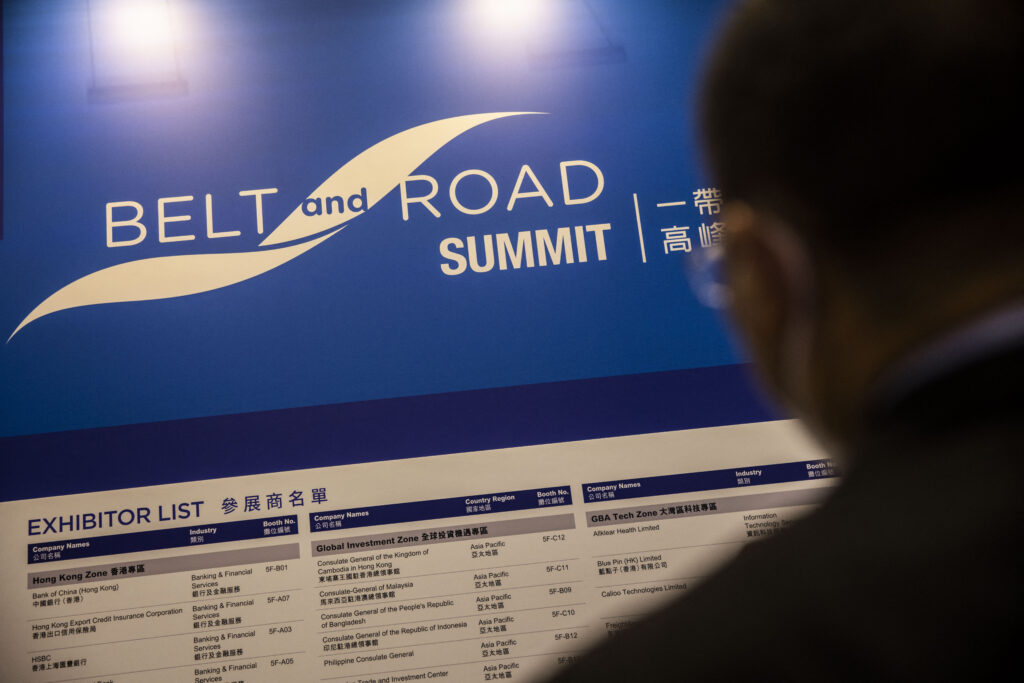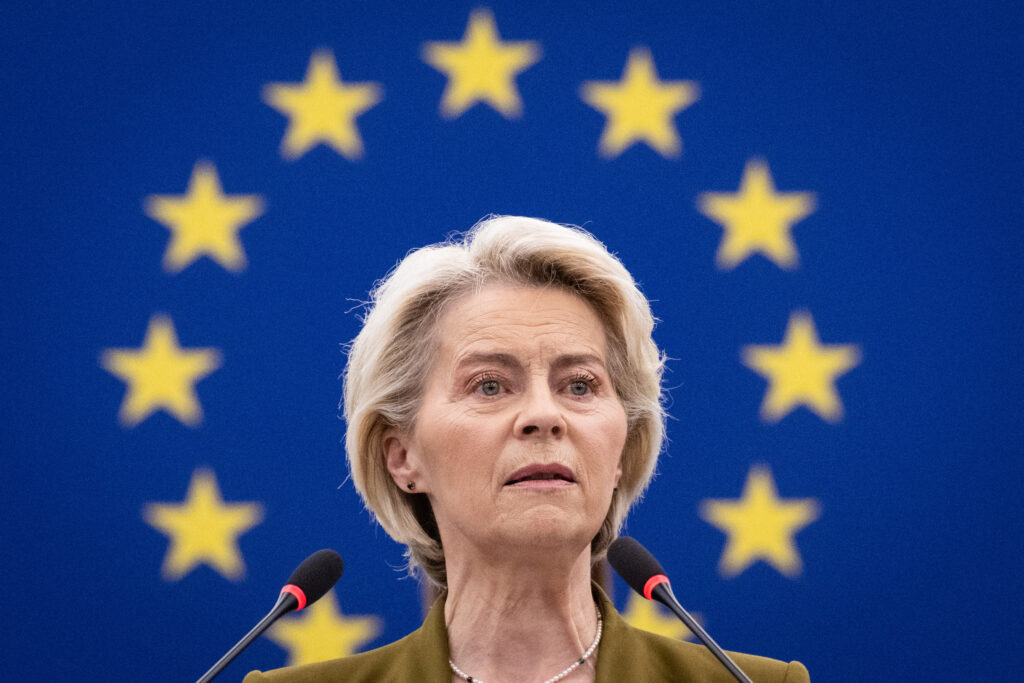In the past few years, many things have changed in the Gulf region. Economic growth has slowed down, new leaders have taken power and security in the region has deteriorated. Against this background, the aim of the Saudi Arabia series of papers is to provide a comprehensive, interdisciplinary understanding of how the kingdom is responding and adapting to the new reality. These papers cover different aspects of Saudi Arabia, such as its economic transformation, the energy market, relations with the United States, Europe and East Asia, external security threats and the role of the youth, women and religion in society.
Saudi Arabia may want to dominate the international politics of the Middle East, to be a regional “hegemon”, but it lacks both the material power and a widely accepted legitimating ideology that would be necessary to do so. A proper understanding of the concept of hegemony, however, leads to the conclusion that no power can exercise that kind of dominance in the Middle East, certainly not Saudi Arabia, Iran or even the United States.
CLICK HERE FOR THE PDF.
By F. Gregory Gause, III
Recovering a more specific and limited understanding of hegemony is necessary for analytic clarity. At its root, hegemony means leadership. While theoretical debates about what constitutes hegemony in international relations are rich and on-going, there are two requisites that analysts generally agree must hold for an actor to be truly hegemonic:[2]Hegemony might be the most overused word in international politics. What are more properly seen as balance of power struggles or localised disputes are now frequently characterised as battles for hegemony. That is certainly true of the discourse on the Middle East.[1] But a better understanding of both the concept of hegemony and the realities of the Middle East will demonstrate that no regional power like Saudi Arabia, or even a global power like the United States, can establish a hegemonic order in the region. Instability is a structural feature of Middle Eastern international politics. That instability can be more or less intense, but it cannot be “solved” through true hegemonic control of the region.
- an overwhelming preponderance of power. A hegemon by definition is without challengers. No other actor approaches the capabilities it can bring to bear both militarily and economically; and
- some amount of acceptance of that leadership position by the other actors in the system. If the dominant power’s ability and right to set the rules of interaction is challenged by a significant number of the other players in the game, it would not be useful to speak of hegemony.
Unipolarity is a necessary, but not a sufficient, condition for hegemony. Power must be matched with generally accepted ideas about how the game should be played. Those ideas could be about what is acceptable and unacceptable in state-to-state relations, how the players should interact economically, even how they should organise their own domestic politics. Hegemony implies order, a powerful rule-maker and willing (or grudging) rule-followers. The hegemon has the power to enforce the rules, but does not have to do so very often because the other actors accept most of the rules, most of the time.
With this more limited and specific understanding of the term, it should be clear that there is no hegemon in the Middle East. There is a contest for influence among a number of players, but no actor has an overwhelming preponderance of power. The United States might have been able to make that claim in the post-Cold War period of the 1990s and 2000s. However, that is a much more questionable proposition now. Certainly, no state is accepted by the other states as having a right to set the rules of interaction in the region. Some leaders might dream of regional hegemony, but those dreams are far from reality.
Saudi Arabia: Candidate for Regional Hegemon?
While Saudi Arabia is making a play for greater regional influence, dreams of hegemony are particularly unrealistic for the rulers in Riyadh. In terms of material power, they have money and are not afraid to use it. The Saudi economy was the largest in the Arab world in 2018, with Turkey not too far behind it.[3] Much more of that economy passes through the hands of the government (in revenues from oil sales) than is the case with Turkey, giving Riyadh a power resource unmatched in the region. Saudi rulers have used that cash to prop up fellow monarchies during the Arab uprisings of 2011, support the military coup in Egypt that removed the elected Muslim Brotherhood president in 2013, and fund allies and proxies in the civil wars and conflicts in Lebanon, Syria, Libya, Yemen and elsewhere.
However, in the other major element of material power, military power, the Saudis are severely lacking. They have the largest military budget in the Middle East and spend more on arms imports than any country not only in the region, but also in the world.[4] But no one thinks that the Saudis can effectively deploy their armed forces across borders to defeat enemies or take territory. They rank behind the armed forces of Iran, Egypt and Turkey in terms of manpower.[5] No one would consider them a match for the smaller Israeli military. The proof of this pudding is in the failed five-year Saudi military campaign to subdue the Houthis in Yemen. No one in the region fears the Saudis as a conventional military power.
The Saudis also lack a compelling claim to regional ideological leadership. Despite spending billions over the past five decades to promote their interpretation of Sunni Islam — the Wahhabi variant of salafism (or return to the pious ancestors) — around the world, very few regional actors look to Riyadh as the leader they want to follow. Saudi “soft power” is certainly not attractive to Shiʿa populations, as Wahhabi salafism has a long history of anti-Shiʿi polemic. The jihadist trend in the salafi spectrum, represented by Al Qaida and the Islamic State in Iraq and Syria (ISIS), not only rejects Saudi leadership, but calls for the overthrow of the Saudi monarchy. Within the broader Sunni Muslim world, the Wahhabi interpretation is challenged politically by the Muslim Brotherhood, which is itself championed by Turkish President Recep Tayyip Erdogan. Far from being able to co-operate with their fellow Sunnis in what many characterise as a sectarian Sunni–Shiʿa struggle for power in the region, the Saudis and the Turks were unable to agree on a common strategy to support the Syrian opposition to Bashar al-Assad in Syria and find themselves on opposite sides of political struggles in Libya and Egypt.[6] Egyptian President Abdel Fattah Al-Sisi, who received enormous financial support from Saudi Arabia and the UAE, refused the Saudi request for military help in Yemen and did not join the Saudi-supported effort to bring down the Assad regime in Syria. Riyadh has not even been able to keep order among its fellow monarchies, with Qatar breaking ranks to very publicly support the Brotherhood in Egypt, Syria and elsewhere. The Saudi effort to bring the Qataris to heel, through a political–economic boycott since 2017, has failed to change Qatar’s independent line.
The record of Saudi foreign policy initiatives in the 2010s is one of a few victories and many losses. Sustaining monarchies in the 2011 crisis was a clear victory, accomplished mostly through financial aid but also with the deployment of troops into Bahrain, the monarchy facing the most serious popular mobilisation. The removal of Muhammad Morsi as president of Egypt and his replacement by coup leader Al-Sisi was another. But the list of losses is much longer: (1) the failure to unseat Iran’s ally, Bashar al-Assad, in Syria; (2) the failure to drive the Houthis from power in Yemen; (3) the failure to reduce the influence of Hizballah in Lebanon; (4) the failure to pressure Qatar into changing its regional policies; (5) the failure to roll back Iranian influence in the eastern Arab world.
The contrast with Iran in the contest for regional influence is instructive. Where the Saudis have failed, the Iranians have succeeded. Their Syrian ally, Bashar al-Assad, has retained power in Damascus. Tehran continues to have significant influence in Iraq, despite American efforts to reduce it. Hizballah remains the arbiter of Lebanese politics. The Houthis in Yemen, who historically have wanted to be Iranian clients more than Tehran has wanted to be their patron, are bleeding Saudi Arabia, supported by a modest financial-political investment from Iran.
Why the Iranian success? The Iranians certainly do not have as much money as the Saudis do, although they have enough to keep their allies and clients supported. Iran has its own specialised military unit, the Quds Force of the Islamic Revolutionary Guard Corps, that can be deployed abroad to support those allies and clients. The Saudis have no comparable element in their military. Most importantly, the Iranians have loyal allies and clients who want to support Tehran’s regional agenda. Iran’s ability to mobilise Shiʿa militias from Lebanon, Iraq and Afghanistan to fight for the Assad regime in Syria is the strongest evidence of that ideological leadership. Iran’s allies among the non-state actors in the region are not only tied to Tehran by money and training; they are tied to it by a common sectarian identity in Shiʿsm, an ideological commitment to the political model of the Islamic Republic and a willing acceptance of Iranian leadership. The non-state actors who are closest ideologically to Saudi Arabia are Al Qaida and ISIS, but they are intent on killing the Saudis. The struggles for power in the broken states of the Arab world are where the battle for influence in the region is being played out.[7] Because Iran has loyal clients willing to fight for it in those struggles, it is winning that battle.
The Impossibility of a Regional Hegemon in the Middle East
If the Saudis cannot achieve regional hegemony in the Middle East, could the Iranians do so? Some observers think they can.[8] But, despite Iranian successes in the current regional contest for influence, Iran is not a candidate for true regional hegemony. It certainly lacks a preponderance of material power. Saudi Arabia is richer; Turkey has a larger army; and, Israel is a formidable regional military power. The United States has imposed crippling economic sanctions on it. It has developed a network of allies and clients that willingly follow its lead, but that network has its own limitations. It is almost exclusively Shiʿa, in a region where Shiʿa Muslims form a majority of the population only in Iraq, Bahrain and Iran itself. Tehran has attempted, with some success, to go beyond this sectarian limitation by supporting the cause of the Palestinians against Israel. But it cannot claim to be the exclusive champion of the Palestinian cause, which is also supported by Erdogan’s Turkey, the Muslim Brotherhood and the salafi jihadists.
Iran runs into the same structural obstacles to becoming a true Middle Eastern hegemon that other pretenders to that title have faced in the past. Gamal Abdel Nasser, the charismatic president of Egypt in the 1950s and 1960s and standard-bearer of Arab nationalism, was the most serious contender for regional hegemony. His Egypt was the most populous Arab state. Cairo then was the centre for Arab elite and popular culture. The oil revolution of the 1970s had not yet shifted the balance of wealth in the region towards the Persian Gulf. Having bested France, Great Britain and Israel in the Suez crisis of 1956, Nasser was a regional hero. Two years later he achieved the dream of Arab nationalists by peacefully absorbing Syria into the United Arab Republic, a potential precursor to more comprehensive Arab unity. However, within 10 years the dreams of Egyptian hegemony had turned to ashes. The conservative monarchical states, with the support of the United States, opposed him. The “progressive” regime that came to power in Iraq in a military coup in 1958 also stood against him, with the support of the Soviet Union. Syria left the United Arab Republic after another military coup in 1961. The tens of thousands of Egyptian troops that Nasser sent to Yemen in 1962 became bogged down in a civil war there. In 1967 his army suffered a humiliating defeat at the hands of Israel, and Egypt lost the Sinai peninsula. By then, it was clear that Nasser had lost the Arab Cold War.[9]
The structural obstacles that once frustrated Nasser and now block Iran’s hegemonic ambitions are impossible to overcome. The Middle East is a multipolar region. It contains at least five serious contenders for regional power — Iran, Turkey, Israel, Saudi Arabia and Egypt — each with its own assets and liabilities, none able to decisively achieve a preponderance of power. Iraq and Syria were once players in this power game, but now both have become playing fields for the others to contest for influence. The operations of a multipolar balance of power system, with its shifting alliances and constant focus among the players on potential challengers, work to frustrate efforts at hegemony in the modern Middle East, just as it did in Europe for centuries and in East Asia now. The Middle East is characterised by another structural obstacle to potential hegemons — the influence of outside great powers.[10] Great Britain, Russia and France had their own ambitions in the Middle East in the 19th and early 20th centuries, carving up the region as the Ottoman and Qajar empires declined. Both the United States and the Soviet Union supported local allies in the region during the Cold War, checking each other and, as result, frustrating the emergence of any regional hegemon. The growth of Chinese power and the re-emergence of Russian influence now presage continued great power meddling in the Middle East.
The most meddlesome outsider in the region is the United States.[11] The failure of its effort to dominate the Middle East in the post-Cold War period is an object lesson in the obstacles to regional hegemony. American power was certainly not in question. The collapse of the Soviet Union and the American-led victory over Saddam Hussein in the Gulf War of 1990–1991 established it as the dominant global actor and the unchallenged (by any other outside power) arbiter of the Middle East. The attacks of 11 September 2001 brought the United States into the region as a military occupier of Afghanistan and Iraq in seemingly easy victories that confirmed American military dominance. But military power and economic might could not be converted into the kind of regional management that gives evidence of real hegemony. Iran, Syria and Saddam’s Iraq all refused to join the American system. Non-state actors across the spectrum, from Hizballah in Lebanon to ISIS, challenged the principles that Washington preached (but rarely practised) — democracy, peace with Israel, open markets — and took up arms against America and its allies. The occupations of Iraq and Afghanistan turned into quagmires, with American power unable to stand up to regimes that were sufficiently powerful and legitimate to govern on their own. The United States, at the height of its power, was even unable to secure Arab–Israeli peace in the 1990s, as allies (Israel) and would-be allies (the PLO and, for a time, Syria, until the peace process collapsed) balked at ending the historic conflict on American terms. As the United States grew tired of the costs of its Middle Eastern adventures, the Arab uprisings of 2011 provided more evidence that regional management was beyond American capabilities.[12]
Conclusion: The Impossibility of Middle Eastern Hegemony
If the United States, arguably the most powerful country in the history of the world in the immediate post-Cold War period, could not impose hegemonic control on the Middle East, it is hardly surprising that Saudi Arabia and Iran have no chance of achieving that dream. The region is too fractured, on both political and ideological lines, for any hegemon to emerge. Regional multipolarity guarantees that the balance of power system will frustrate those who seek dominance. Outside power rivalries played out in the Middle East provide another block to uncontested control. The ideological and identity divisions in the region make it nearly impossible for any would-be hegemon to put forward a unifying idea that could undergird a hegemonic system. Arabs, Turks, Iranians, Kurds and Israelis already have plenty of historical animosities to keep them separate. Monarchies, military regimes, a few (somewhat shaky) democracies and a powerful Islamic republic have little in common in terms of political ideology to unite them. Even the one great common identity across the region, Islam, is more a cause for political division than unity. The historic sectarian divide between Sunnis and Shiʿa, while exaggerated by some as the cause of the current regional crisis, is real. Within the Sunni world the bottom-up populism of the Muslim Brotherhood, the official top-down salafism of Saudi Arabia and revolutionary salafi jihadism all claim to speak for Sunni Islam.
Hegemony might be the dream of some ambitious actors, but the reality of the Middle East is a multipolar balance of power struggle among regional actors. That divisive reality is exacerbated by the interventions of outside powers like the United States and Russia, and perhaps in the near future China. Whatever order might be fashioned in the region is not going to be imposed by a hegemon. It will have to come from understandings among the major regional states and the interested outside powers about the basic rules of the balance of power game. With the deep ideological divisions and continuing civil wars that characterise the Middle East now, such an understanding is not on the horizon.
About the Author
Dr F Gregory Gause, III, is professor of international affairs and John H Lindsey ’44 Chair at the Bush School of Government and Public Service, Texas A&M University, and serves as the head of the Department of International Affairs at the school. He is the author of The International Relations of the Persian Gulf (Cambridge University Press, 2010) and other books and articles on the international politics of the Middle East.
Image caption: Saudi Arabia’s Crown Prince Mohammed bin Salman attending the G20 summit in Osaka, Japan. Photo: Palácio do Planalto / Flickr
[1] Japan Institute of International Affairs, “Strategic Annual Report 2019: The Middle East: Intensifying Competition for Hegemony over a New Regional Order”, https://www2.jiia.or.jp/en/pdf/strategic_annual_report/chapters/JIIA-Strategic%20Annual%20Report-2019-09-The%20Middle%20East%20Intensifying%20Competition%20for%20Hegemony%20over%20a%20New%20Regional%20Order.pdf; Einat Wilf, “Special Report: The Battle for Hegemony in the Middle East”, Australian Strategic Policy Institute, May 2017, https://css.ethz.ch/content/dam/ethz/special-interest/gess/cis/center-for-securities-studies/resources/docs/ASPI-SR106_Middle-East-hegemony.pdf.
[2] G John Ikenberry and Daniel H Nexon, “Hegemony Studies 3.0: The Dynamics of Hegemonic Orders”, Security Studies, published online 10 June 2019, https://www.tandfonline.com/doi/full/10.1080/09636412.2019.1604981.
[3] The World Bank, Data, https://data.worldbank.org/indicator/NY.GDP.MKTP.CD?locations=SA; https://data.worldbank.org/indicator/NY.GDP.MKTP.CD?locations=TR.
[4] Statista, “Military spending in the Middle East and North Africa in 2018 “, nd, Statista.com, https://www.statista.com/statistics/676109/mena-military-spending-by-selected-country/; Stockholm International Peace Research Institute, “USA and France dramatically increase major arms exports; Saudi Arabia is largest arms importer, says SIPRI”, 9 March 2020, https://www.sipri.org/media/press-release/2020/usa-and-france-dramatically-increase-major-arms-exports-saudi-arabia-largest-arms-importer-says.
[5] International Institute for Strategic Studies, Military Balance 2019, Chapter 7: Middle East and North Africa, https://www.iiss.org/publications/the-military-balance/the-military-balance-2019/middle-east
[6] F Gregory Gause, III, “Ideologies, Alignments and Underbalancing in the New Middle East Cold War”, PS: Political Science and Politics, July 2017, https://www.cambridge.org/core/journals/ps-political-science-and-politics/article/ideologies-alignments-and-underbalancing-in-the-new-middle-east-cold-war/739C0AB7ACDAD0E8ADE7D36C3CD37AA6.
[7] F Gregory Gause, III, “Beyond Sectarianism: The New Middle East Cold War”, Brookings Doha Center Analysis Paper No. 11, July 2014, https://www.brookings.edu/wp-content/uploads/2016/06/English-PDF-1.pdf.
[8] Huda Raouf, “Iranian Quest for Regional Hegemony: Motivations, Strategies and Constraints”, Review of Economics and Political Science, July 2019, https://www.emerald.com/insight/content/doi/10.1108/REPS-02-2019-0017/full/html; Itamar Rabinovich, “How Iran’s regional ambitions have developed since 1979”, Brookings Institution, 24 January 2019, https://www.brookings.edu/blog/order-from-chaos/2019/01/24/how-irans-regional-ambitions-have-developed-since-1979/; Rufat Ahmedzade, “With Soleimani gone, Iran’s regional hegemony faces setbacks”, LSE Middle East Centre Blog, 12 February 2020, https://blogs.lse.ac.uk/mec/2020/02/12/with-soleimani-gone-irans-regional-hegemony-faces-setbacks/; Ali G Dizboni and Sofwat Omar, “Hegemonic Aspirations and Middle East Discord: The Case of Iran”, in Conflict and Diplomacy in the Middle East: External Actors and Regional Rivalries, ed Yannis Stivachtis (E-International Relations Publishing, November 2018), https://www.e-ir.info/2018/11/25/hegemonic-aspirations-and-middle-east-discord-the-case-of-iran/.
[9] Malcolm H Kerr, The Arab Cold War: Gamal Abd al-Nasir and his Rivals, 1958–1970 (Oxford University Press, 1971).
[10] Ian S Lustick, “The Absence of Middle Eastern Great Powers: Political ‘Backwardness’ in Historical Perspective”, International Organization 51, No. 4 (Autumn 1997), https://www.cambridge.org/core/journals/international-organization/article/absence-of-middle-eastern-great-powers-political-backwardness-in-historical-perspective/7C85BD4FC582FF623175421D383A657E.
[11] Michael C Hudson, “To play the hegemon: fifty years of US policy toward the Middle East”, Middle East Journal 50, No. 3 (Summer 1996), https://www.jstor.org/stable/4328954?casa_token=dORI4U_4oaAAAAAA%3AI4gBjx0Kf48R_r1NbRR9wM_ivX1WKgqIVTiL9XU0xoc4Tr-8Lu5kv-cR2fkC14eYLEZHxDdwS7k7spOc1-TW9CqhhSG9YoAnffbKUMG7aSC5LpNZ5Nj0&seq=1#metadata_info_tab_contents.
[12] F Gregory Gause, III, “’Hegemony Compared: Great Britain and the United States in the Middle East”, Security Studies, published online 3 June 2019, https://www.tandfonline.com/doi/abs/10.1080/09636412.2019.1604987.





